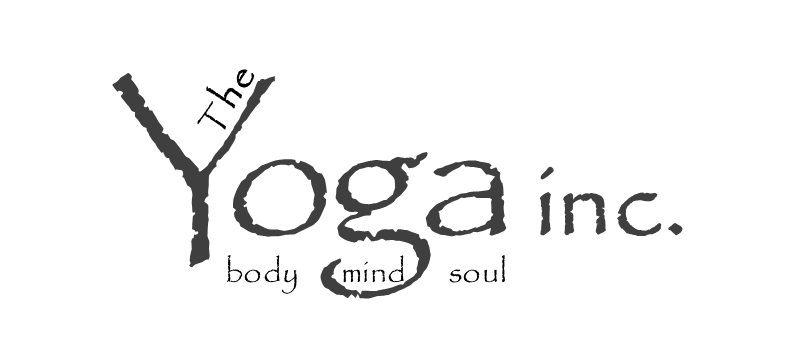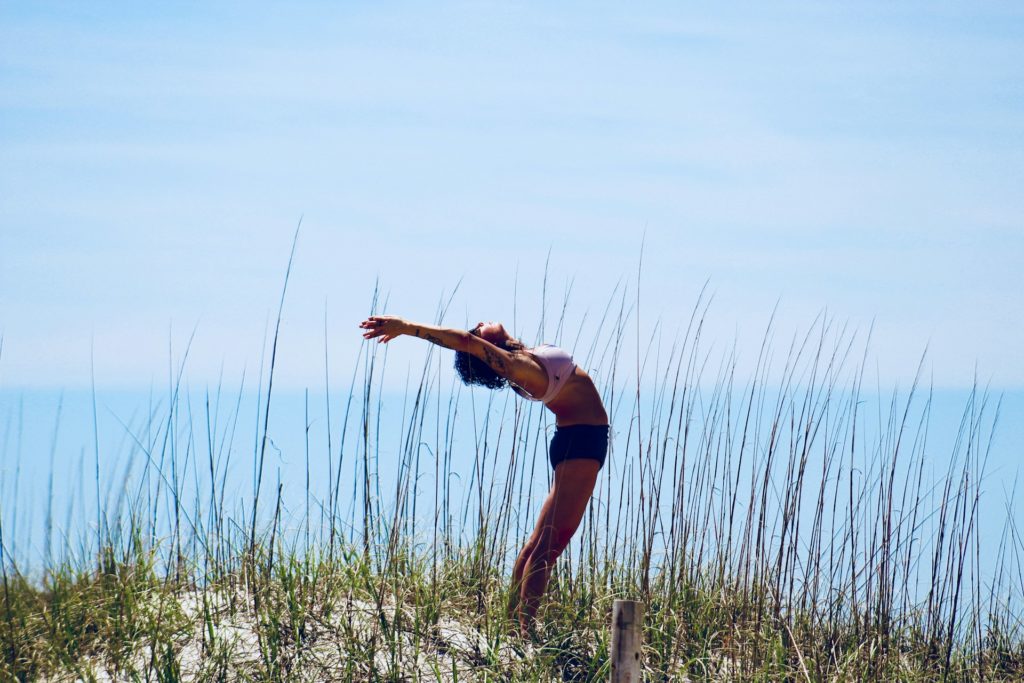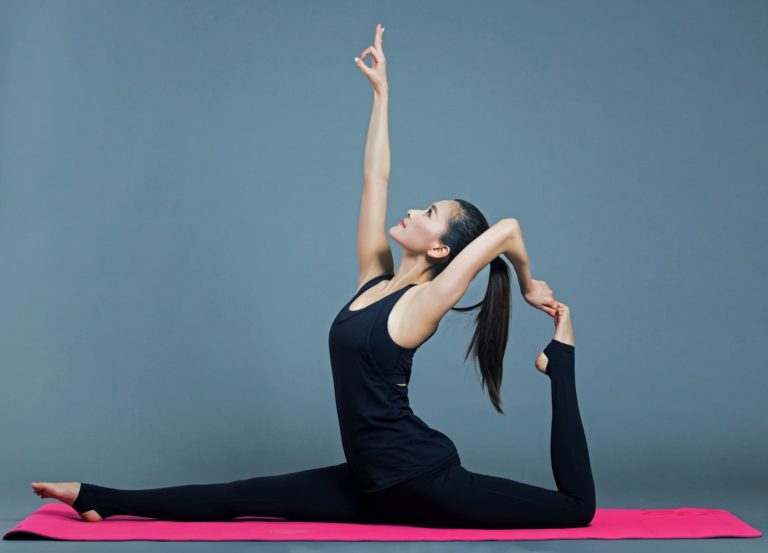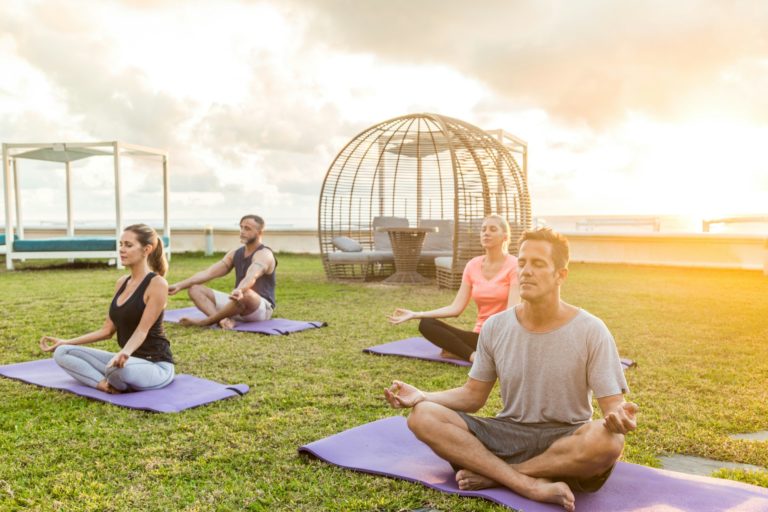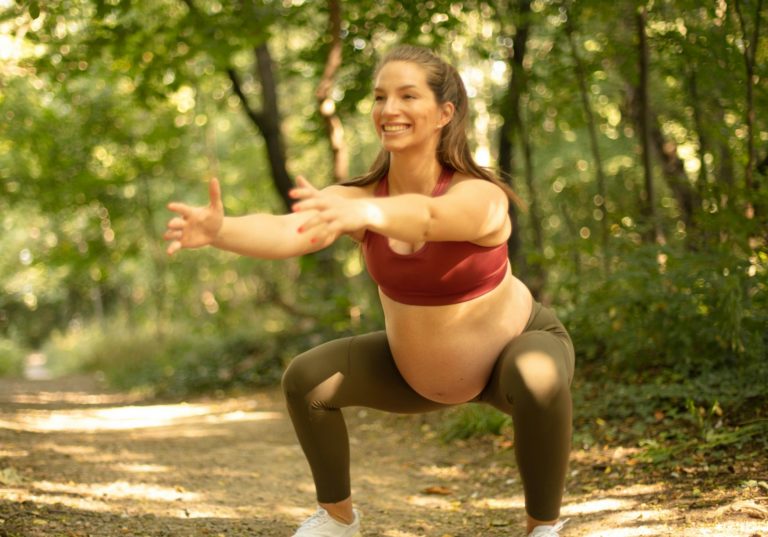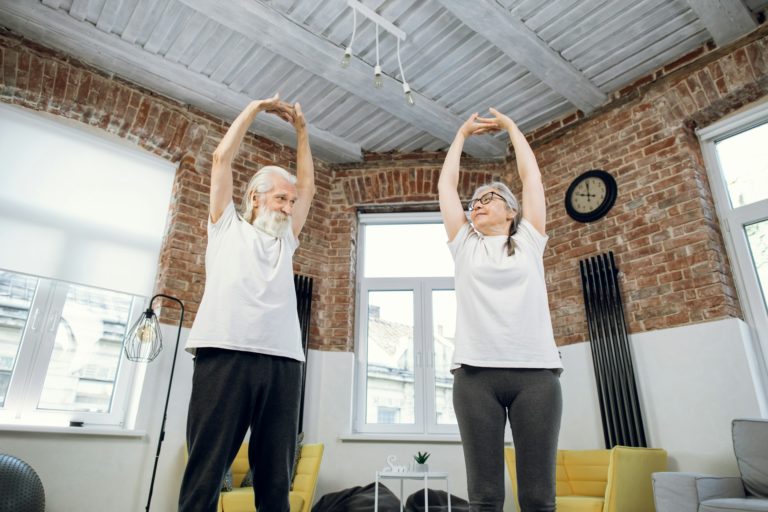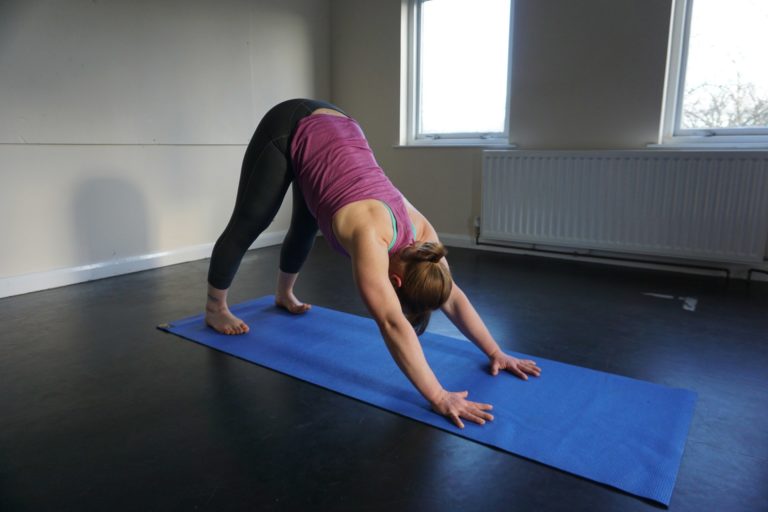Every breath counts in yoga practice, but not many realize that the term “Vinyasa” reflects much more than mere movement; it symbolizes the flow of life itself. In the intricate dance of asanas, Ashtanga and Vinyasa Yoga stand out for harmonizing the pace of breath with physical transitions. As they sweep across America and beyond, these disciplines, including Ashtanga Vinyasa Yoga and Vinyasa Flow Yoga, are not just exercises but gateways to a heightened awareness of mind, body, and spirit. But what is Vinyasa Flow Yoga, and how does it differ from Ashtanga Yoga? What sets them apart? This deep dive reveals the astonishing balance between meticulous form and mindful flow these practices command.
Key Takeaways
- Understanding the shared foundation and nuances between Vinyasa and Ashtanga Yoga.
- Recognizing Ashtanga vinyasa yoga as the wealthy, disciplined ancestor to what is Vinyasa flow yoga today.
- Grasping the importance of breath as the cornerstone of both yoga styles.
- Discovering the ancient eight-limbed path of Ashtanga yoga what is it offers a comprehensive lifestyle discipline.
- Appreciating the adaptability of vinyasa flow yoga to individual needs and contemporary lifestyles.
Introduction to Yoga’s Rising Popularity
The ancient practice of Yoga, with its profound origins in the East, has traversed time and geography to emerge as a beloved discipline worldwide, especially in the United States. Its seamless adaptation to modern lifestyle changes underscores Yoga’s universal message of harmony and personal growth. Today, yoga practitioners extend beyond borders, leading to a diverse, conscious community dedicated to enhancing their spiritual well-being and physical health through this timeless tradition.
Yoga’s Deep Roots and Modern Appeal
With a history steeped in spirituality and wellness, Yoga’s journey begins approximately 2700 B.C. Over the millennia, it has consistently revitalized itself, finding relevance in every era. The dynamic forms of Ashtanga and Vinyasa Yoga, known for their attention to fluidity and breath, significantly contribute to Yoga’s modern allure. Not just a physical regimen, these practices also offer a sanctuary for meditation and self-exploration, poised perfectly at the intersection of ancient wisdom and contemporary life.
Yoga in America: A Growing Community of Yogis
In reflecting on Yoga’s popularity, recent statistics indicate a surge to 55 million yoga practitioners in the U.S. as of 2020. This upswing has attributed Yoga’s popularity to Yoga’s proven benefits in reducing stress, improving heart health, and promoting overall well-being. Citizens from all walks of life are turning to ashtanga and vinyasa yoga for balance and flexibility—integral aspects of a healthy, active lifestyle. The rise of yoga studios and classes across the country speaks volumes of its endearing and enduring appeal, uniting people in their quest for physical vitality and mental serenity.
Understanding Ashtanga and Vinyasa Yoga
Tracing the roots of Ashtanga Vinyasa Yoga and Vinyasa flow yoga leads us to a shared origin. Both blossomed from the same ancient traditions yet grew into distinct practices that cater to diverse preferences. The lineage is significant, flowing from the teachings of Sri Krishnamacharya—often referred to as the “father of modern yoga”—who conveyed his profound knowledge to his disciplined student, Pattabhi Jois. This transfer of wisdom set the stage for what has evolved into the dynamic and fluid discipline many know and practice today.
The Shared History and Evolution
Ashtanga and Vinyasa yoga, a system of intertwined yoga postures and breathing techniques, was first introduced to the Western world through Pattabhi Jois’s teachings. This practice has deeply influenced the contemporary yoga landscape. At the heart of Ashtanga-style yoga lies a meticulous and unchanging sequence that serves as a meditative journey through movement.
Critical Aspects of Vinyasa and Ashtanga Practice
The beauty of Vinyasa lies in its fluidity, stemming from the Ashtanga roots but diverging to emphasize movement that is harmonious with breath. The term vinyasa captures this transition’s essence, with each movement seamlessly flowing into the next. Common yoga postures such as the grounding downward-facing dog, the strengthening cobra, and the stabilizing chaturanga dandasana are threads that weave through both styles, with Ashtanga delineating a specific sequence comparably to Vinyasa’s creative liberty.
Whether one’s preference tilts towards the structured discipline of Ashtanga or the graceful cohesion of Vinyasa Flow, both paths lead practitioners through a transformative journey, uniting body, breath, and mind in a deepening cullet of self-discovery and holistic well-being.
The Methodology Behind Ashtanga Yoga
Ashtanga yoga is not just a physical exercise; it’s a holistic approach that interweaves the dynamic synergy of movement, breath, and spirit. For those pondering its meaning, it’s essential to recognize its roots in the ancient text known as the Yoga Korunta. This text has shaped modern practice, mainly through the teachings of the influential sage Patanjali.
The crux of Ashtanga lies in its six series, a systematic sequence that deepens the practitioner’s journey with each advancing posture. Unlike the freeform paths of other yoga styles, this journey marks the progressive growth of one’s physical, ethical, and spiritual development.
The Significance of the Ashtanga Series
Each series in Ashtanga marks a stepping stone toward mastery and self-awareness. The consistent and systematic repetition within this practice is not just for the body but also for the mind, grooming it for higher realms of clarity and focus. Commitment to this sequence carves out the path toward a disciplined life.
The Eight Limbs of Ashtanga-Style Yoga
The eight limbs of Yoga, as immortalized in the Yoga Sutras, provide a comprehensive foundation for a virtuous and purposeful life. Patanjali outlined these principles as a ladder to achieve the ultimate unity of the self with the cosmos. This in-depth process begins with ethical precepts and culminates in the bliss of samadhi:
- Yamas (ethical standards)
- Niyamas (self-discipline)
- Asanas (posture)
- Pranayama (breath control)
- Pratyahara (sense withdrawal)
- Dharana (concentration)
- Dhyana (meditative absorption)
- Samadhi (bliss or enlightenment)
Ashtanga yoga’s structure serves as a disciplined mirror for individuals to reflect on and refine themselves. It maps an inner journey toward peace and stability while fostering a connection between movement and mindful stillness.
Diving Deep into the Ashtanga Yoga Primary Series
The Ashtanga Yoga Primary Series, or Yoga Chikitsa, is a transformative practice that serves as yoga therapy to purify and detoxify the body. This ritual journey of movement and breath begins with traditional Sun Salutations and unfolds into a meticulously designed sequence to enhance physical and mental well-being.
Guided Structure of Ashtanga Classes
Every Ashtanga class follows a guided structure, ensuring practitioners receive comprehensive instruction throughout the primary series. The series starts with five repetitions of Sun Salutations A and B, igniting internal heat and preparing the body for the asanas. Instructors lead students through each posture, employing the Vinyasa count—a specific method of movement and breathing intended to realign and detoxify their systems.
Cultural Impact of Ashtanga Yoga
Ashtanga Yoga has made a significant cultural impact by spreading its profound effects worldwide. Cultivating strength and ease, it appeals to those seeking a disciplined yet profoundly therapeutic exercise. This ancient Yoga system has contributed to a paradigm shift in holistic wellness worldwide with its capability to detoxify the body and clarify the mind.
The asanas in the primary series work symbiotically, targeting muscle flexibility, spinal alignment, and strength building. Strategically placed, the sequential order of these asanas is no coincidence—each position is to prepare for the next, ensuring a balanced and practical session of Yoga Chikitsa.
For many, the primary series is a starting point on a journey through the echelons of Ashtanga Yoga. With each practice, one exercises and engages in a powerful form of mind-body therapy, cleansing the inner workings and paving the way for a healthier lifestyle.
Transitioning to the Traditional Vinyasa Flow
One often encounters dynamic and expressive Vinyasa Flow yoga when delving into Yoga. This form celebrates an evolution toward fluid movements and breath-synchronized transitions, originating from the precision and discipline of its predecessor, ashtanga vinyasa yoga. But what is vinyasa flow yoga, and how does it provide a uniquely liberating experience?
Unlike its structured cousin, traditional vinyasa yoga is unattached to repetitive poses. Each class is a new opportunity to explore a tapestry of asanas that mirrors a river’s fluidity—unpredictable, natural, and constant motion. Here, the breath acts as the compass, guiding practitioners through each movement with rhythmic grace.
At the heart of Vinyasa Flow yoga lies the harmonious dance between motion and breath—a confluence that turns the practice into a moving meditation.
This form of Yoga goes beyond the confines of memorization and invites a creative spirit. The sequence of postures may ebb and flow with the tempo of the day, the mood of the room, or the intention behind the session. Practicing traditional Vinyasa Flow becomes a journey of self-discovery, guided by the instructor but deeply personal in execution.
From a bird’ s-eye view, a Vinyasa Flow yoga class seems like a choreographed performance, seamlessly connecting each pose to the next. This seamless flow attractively distinguishes it from the more controlled Ashtanga practice, offering an adaptable environment that responds to individual needs and encourages intuitive movement.
As we explore the layers of this practice, we see how each session builds a different narrative, ultimately contributing to a diverse and enriching yoga experience that is as boundless as the practitioner’s imagination.
The Dynamic Nature of Vinyasa Yoga
The art of Vinyasa Yoga encompasses more than physical exercise; it is an intricately woven dance between movement and breath. Each vinyasa yoga class invites practitioners to experience a seamless flow of poses, ensuring a graceful transition that challenges and nurtures the body.
Traditional vinyasa yoga participants savor the uniqueness of each session, where routines are not merely repeated but recreated to encourage the spirit and enhance the mind-body connection. This dynamic practice champions a blend of flexibility and strength, endowing yogis with a fortified resilience that permeates beyond the mat.
Exploring the Seamless Flow of Poses
The essence of Vinyasa lies in its fluidity—the way one posture merges into the next without interruption. The breath acts as an intimate guide leading from one movement to the next, establishing a meditative and enlivening rhythm. This continuous movement energizes the limbs, fortifies the core, and elevates the heart rate, sustaining a harmonious balance between dynamic activity and introspective tranquility.
Musicality in Vinyasa Classes
Music’s subtle yet powerful presence is integral to the ambiance of a Vinyasa session. A well-curated playlist resonates with the class’s rhythm, enhancing the atmosphere and assisting participants in finding their cadence within the practice. Music in Vinyasa Yoga serves more than aesthetic pleasure—it is a nonverbal cue signaling transitions and tempo, fostering an immersive experience that deeply connects body, sound, and soul.
Comparing Ashtanga and Vinyasa Sequences
Ashtanga yoga and Vinyasa are beacons in modern Yoga, each offering unique perspectives on the art of movement and breath. Both forms require dedication to movement synchronization and precise breathing execution, but their approach to class structure allows yogis to explore varying disciplines within their practice.
Similarities in Movement and Breath
Ashtanga and Vinyasa Yoga share a kinship in using breath to guide movement. They respect the ancient traditions of Yoga’s fluid dance between pose and breath. Each inhale invites a new motion, and with each exhale, a transition is born, embodying the very essence of Vinyasa—to place specially.
Differences in Class Structure and Execution
Ashtanga yoga’s class structure is a testament to its deeply rooted history. Practitioners follow a set sequence, encouraging consistency and mastery over time. In contrast, Vinyasa flows like a river, ever-changing and adapting to the instructor’s intentions, offering a new experience with each class.
Ashtanga and Vinyasa yoga paths merge in philosophy and purpose. Yet they diverge in practice, granting practitioners the freedom to choose a journey that aligns with their yoga narrative—one of unwavering discipline or creative exploration.
Physical and Mental Benefits of Ashtanga Practice
The revered practice of Ashtanga Yoga is not only a form of exercise but a holistic approach to wellness that confers numerous Ashtanga yoga benefits. Through its disciplined sequences and breathwork, practitioners often experience significant improvements in their physical and mental health.
Enhancing Flexibility and Strength
One of the most prominent benefits of Ashtanga Yoga is its ability to increase strength and flexibility. The series of postures, ranging from standing, sitting, and finishing poses, are designed to stretch and strengthen different muscle groups, promoting balanced development throughout the body.
- Improved muscle tone and joint mobility.
- Enhanced core stability and muscular endurance.
- More excellent range of motion and bodily control.
Cardiovascular and Postural Improvements
Studies show that consistent and vigorous practice of Ashtanga Yoga improves cardiovascular health. The dynamic flow of postures elevates the heart rate, leading to better circulation and respiratory capacity. Additionally, Ashtanga helps correct posture through precise alignment cues and strengthening of the postural muscles, making this ancient form of Yoga an excellent ally in combating the modern-day sedentary lifestyle.
A regular Ashtanga Yoga practice can lead to deeper breaths and increased oxygen flow, which is vital not only for the heart but for the overall energy and vitality of the body.
Ashtanga Yoga is a transformative practice that reaches beyond physicality, tapping into mental fortitude and clarity. The synchronization of breath with movement instills a meditative focus, carving a path toward tranquility and mental resilience. Whether looking to enhance flexibility, build strength, or find mental equilibrium, Ashtanga Yoga is an invaluable practice that continues to enrich lives with its timeless wisdom.
Embracing the Versatility of Vinyasa Yoga
Vinyasa yoga’s versatility has surged in popularity for good reason. It’s not just a physical workout; it’s a total mind-body experience that helps reduce stress and increase mindfulness. Vinyasa Yoga cultivates a meditative state by synchronizing breath with movement, allowing practitioners to move with intention and grace, creating a sense of inner calm.
Stress Relief and Mindfulness
Through its rhythmic and flowing sequences, Vinyasa Yoga becomes a moving meditation that richly contributes to stress reduction. Participants are ushered into the present moment by requiring focus on both movement and breath, an essential practice of mindfulness. The constant movement from one pose to another fosters a deepened state of concentration that helps to quiet the chatter in the mind and release lingering tension within the body.
Adaptive Nature Suitable for All Levels
Vinyasa Yoga prides itself on being an adaptive practice that embraces individuals of all skill levels. From beginners to advanced yogis, everyone can partake in Vinyasa with modifications and variations that cater to different physical abilities and personal goals. Such adaptability makes the practice more inclusive and allows it to grow with practitioners as they evolve in their yoga journey, continually offering new challenges and areas for growth.
- Versatile sequences tailored to individual needs
- Options for modified versions of challenging poses
- Scalable difficulty that progresses with experience
In sum, the adaptive nature and versatile approach of Vinyasa Yoga make it a profoundly enriching practice that welcomes diversity and champions personal wellness.
Ashtanga and Vinyasa Yoga: Flow and Form Balance
The juxtaposition of Ashtanga and Vinyasa Yoga in the fitness landscape paints a rich tapestry of choice for the contemporary yogi. Where Ashtanga offers a disciplined sequence rooted in centuries-old tradition, delivering unwavering structure and strength, Vinyasa Yoga, on the other hand, manifests as a rhythmic dance between poses, championing fluid movement and adaptability.
Vinyasa flow and its seamless movements have gained immense popularity due to their balance between physical exertion and spiritual serenity. Twelve essential keywords eloquently embed the essence of these revered styles, each resonating with yogis pursuing a transformative and holistic journey for body and mind.
- Mindfulness in Motion
- Dynamic flexibility
- Physical alignment
- Breath-synchronized movements
- Disciplined progression
- Energetic stamina
- Therapeutic asanas
- Meditative clarity
- Personal spiritual practice
- Creative expression
- Self-refinement through Yoga
- Community of Practitioners
Moreover, acknowledging each practice’s distinctiveness allows for a tailored approach to wellness that aligns with an individual’s needs—all while pioneering a profound understanding and respect for Ashtanga’s precision and Vinyasa’s creativity.
“Yoga is the journey of the self, through the self, to the self.” – The Bhagavad Gita
Whether one embarks on the vigorous path of Ashtanga or the liberating waves of Vinyasa flow, the pursuit of balance is a shared quest. It unites yogis around the globe in a collective rhythm of physical and spiritual evolution.
As we approach the end of our exploration, it is evident that both Ashtanga and Vinyasa Yoga do more than strengthen the body; they foster a resilient disposition, ready to flow through life’s ebbs and tides gracefully. The ethos of Yoga Trans is that the physical imbues life with a sense of purpose, connection, and poise.
Choosing the Right Yoga for Your Goals
Aligning your yoga practice with your aspirations is crucial when embarking on a physical and spiritual betterment journey. Whether you seek a rigorous routine or yearn for a tranquil escape, the Yoga you do is instrumental in steering your path toward wellness. This section delves into how the disciplined flow of a structured Ashtanga practice compares with the liberating movements of a spontaneous vinyasa flow and the time commitment involved in both.
Structured versus Spontaneous Practice
For those who find solace in consistency and detailed progression, Ashtanga Yoga represents the zenith of structured practice. With its roots burrowed deep in the bedrock of tradition, Ashtanga Yoga offers a sanctuary of routine where every session builds upon the last, ensuring a steady advance towards meditative and physical agility. Conversely, if your heart beats to the drum of improvisation and variety, the spontaneous vinyasa flow will likely resonate with you. This practice invites creativity and gives each class a personalized and explorative experience.
Physical Intensity and Time Commitment
Determining the time you can dedicate to Yoga is pivotal. An Ashtanga session may demand a more significant time commitment, typically stretching to around 90 minutes to complete the series of poses precisely as dictated. Vinyasa offers more flexibility, with many classes designed to cater to those who may not have more than an hour to spare. Both styles of Yoga promote vigorous physical engagement, but the question remains: How much time are you willing to invest in meeting the suitable Yoga for yoga goals?
Finding Your Personal Yoga Fit
Embarking on the journey to discovering the type of Yoga that Aligns with your personal needs and lifestyle is an exciting venture in self-exploration that is as diverse as the individuals who practice it. Yoga offers an array of styles that cater to varied interests and goals. Whether you seek the rigor of disciplined sequences or the liberty of fluid movements, the quest for your personal yoga fit is an intimate process of trial and reflection.
Self-Exploration and Preference in Yoga
Yoga is not merely a physical exercise but a conduit for connection with one’s innermost self. Delving into different yoga classes, one begins to understand the subtle nuances between the practices. This process of self-exploration can reveal personal preferences in pace, complexity, and spiritual depth, guiding you toward a style that offers a balance of challenge and tranquility tailored to your essence.
Communal Experience in Yoga Classes
Another significant facet to consider is the communal yoga experience. Group classes provide a sense of camaraderie and shared energy that can elevate your practice. Engaging with fellow yogis can significantly impact motivation and enjoyment, whether the synchronized breath in a Vinyasa flow or the collective focus in an Ashtanga session. This collective journey often transforms a routine into a sacred ritual.
Finding your personal yoga fit is a reflective endeavor that leads you through various landscapes of self-exploration to find your ideal communal yoga experience. So, unfurl your mat and dive into the different yoga classes—it’s the first step towards uncovering a practice that resonates with your body and spirit.
Integrating Ashtanga and Vinyasa into Your Lifestyle
Engaging in a lifestyle that embraces Ashtanga Vinyasa Yoga is not just about practicing on the mat; it’s about weaving the philosophy and discipline of Yoga into the Yoga fabric of your daily life. For those seeking to transform their existence, incorporating such practices facilitates a connection with oneself that transcends the physical benefits.
Incorporating Yoga into Daily Routines
Integrating Yoga into a lifestyle involves incorporating daily yoga routines that align with your rhythm. Whether it’s a morning session of Sun Salutations to invigorate the day or evening meditation to foster tranquility, the goal remains consistent: cultivating a practice that supports and enhances your daily life.
- Begin with small, manageable commitments, such as a 10-minute morning stretch.
- Infuse mindfulness and breathwork into everyday activities like walking or doing household chores.
- Set reminders to pause for brief yoga-inspired breaks throughout the day to maintain focus and balance.
Cultivating a Lifelong Yoga Journey
Yoga is not merely an exercise; it’s a journey of self-discovery and personal development. By cultivating a lifelong practice, you commit to continuous learning and adaptation. This commitment encourages resilience and grit, which are essential for navigating life’s undulations.
- Seek variety in practice to keep it fresh and challenging, including both Ashtanga and Vinyasa styles.
- Enroll in workshops or retreats for deeper insight and community connection.
- Reflect regularly on your progress and set intentions to maintain direction and purpose in your practice.
Integrating the art of Ashtanga Vinyasa Yoga into your life is a transformative process, rich with subtle and substantial rewards. As you forge your path, remember that each pose, breath, and moment of stillness contributes to the more excellent mosaic of your well-being.
Conclusion
In modern Yoga, the Yogaonizing practices of Ashtanga Vinyasa and Vinyasa Flow stand out. Each carves a distinct yet interconnected path toward a balanced mind, body, and spirit discipline. Whether one seeks the orchestrated sequence and steadfast progression of Ashtanga or the expressive versatility and spontaneous alignment of breath and movement in Vinyasa Flow, these practices are more than mere exercise routines. They are comprehensive paths toward wellness and self-discovery.
Harmonizing Flow and Form in Yoga
The synergy of Ashtanga and Vinyasa illustrates Yoga’s profound adaptability. This Yoga caters to a broad spectrum of preferences and objectives, allowing practitioners to harmonize the rigorous structure with the fluidity of transition. Ashtanga’s methodical form is beautifully balanced by Vinyasa’s graceful flow, creating a holistic practice that can be tailored to individual needs while retaining the essence of the original philosophies and techniques.
Final Thoughts on Choosing Your Path
As the journey to choose a yoga path unfolds, it becomes a personal expedition, where the destination is not just about physical accomplishment but also about cultivating serenity and resilience within. Ashtanga Vinyasa Yoga and Vinyasa Flow Yoga serve as guiding lights, each possessing an inherent value to be revered and explored. Selecting a practice is less about prescribing a fixed regimen and more about embarking on a voyage of wellness that resonates with one’s soul. As each person’s narrative is unique, so should their yoga journey.
Helpful Links
F&Q
What is the difference between Ashtanga and Vinyasa Yoga?
Ashtanga Yoga is a structured practice that follows a series of asanas combined with a specific breathing technique called Ujjayi. It focuses on the same sequence of poses in the same order. Vinyasa Yoga, also known as flow yoga, is less structured. Sequences can vary from class to class, focusing on transitioning between poses through breath.
Can beginners practice Ashtanga or Vinyasa Yoga?
Yes, beginners can practice both styles but might find Vinyasa Yoga more accessible due to its adaptability. Ashtanga Yoga can be more challenging for beginners due to its set sequence and the level of physical demands, but many studios offer introductory classes to cater to newcomers.
What does "vinyasa" actually mean?
In Sanskrit, “vinyasa” can be translated to “in a special way,” which refers to the movement and breath synchronization that occurs when moving from one asana to the next within a yoga flow.
What are the Eight Limbs of Ashtanga Yoga?
The Eight Limbs of Ashtanga Yoga, as detailed by Patanjali in the Yoga Sutras, are an integral part of Ashtanga practice. They consist of ethical standards (yamas), self-discipline (niyamas), posture (asana), breath control (pranayama), sensory withdrawal (pratyahara), concentration (dharana), meditation (dhyana), and absorption into the Universal (samadhi).
How often should I practice Ashtanga or Vinyasa Yoga for optimal benefits?
The frequency of practice depends on individual goals, schedules, and physical abilities. A general guideline is to aim for 3-6 times a week, but even a daily practice is common among dedicated yogis. Listening to your body and finding a sustainable routine is vital.
What is the Ashtanga Yoga Primary Series?
The Ashtanga Yoga Primary Series, or Yoga Chikitsa, is the first and most foundational series within Ashtanga Yoga. The design of Ashtanga Yoga is to heal and detoxify the body, align the spine, and build strength and flexibility.
Is Vinyasa Yoga good for stress relief?
Yes, Vinyasa Yoga is excellent for stress relief. The fluid movement, combined with breath work, helps to calm the mind and can reduce overall stress levels.
What should I expect in a Vinyasa class?
Expect a dynamic yoga session with a series of postures fluidly connected by your breath. Each instructor’s class structure can vary, and many instructors use music to enhance the flow of the experience.
Can Ashtanga and Vinyasa Yoga improve mental health?
Both Ashtanga and Vinyasa Yoga can improve mental health by promoting mindfulness, reducing stress, and increasing the practitioner’s overall well-being.
Are there any rules about eating or drinking before yoga practice?
Avoid heavy meals 2-3 hours before practicing Yoga. Hydration is essential, so drinking water before and after practice, but not during, is advisable, especially in Ashtanga Yoga, where maintaining internal heat is necessary.
What is the main focus of Ashtanga Vinyasa Yoga?
Ashtanga Vinyasa Yoga primarily focuses on synchronizing breath with movement to create a flowing and seamless sequence. It also adheres to a specific set of asanas for each series.
How can I choose between Ashtanga and Vinyasa Yoga?
Your choice between Ashtanga and Vinyasa Yoga should align with your structure, challenge, and versatility preferences. A structured practice like Ashtanga might suit those looking for regularity and depth, while Vinyasa offers variety and flexibility.
Table of Contents
Toggle